Analysis: 2018 Proposed Ordinance Changes to Home Occupations
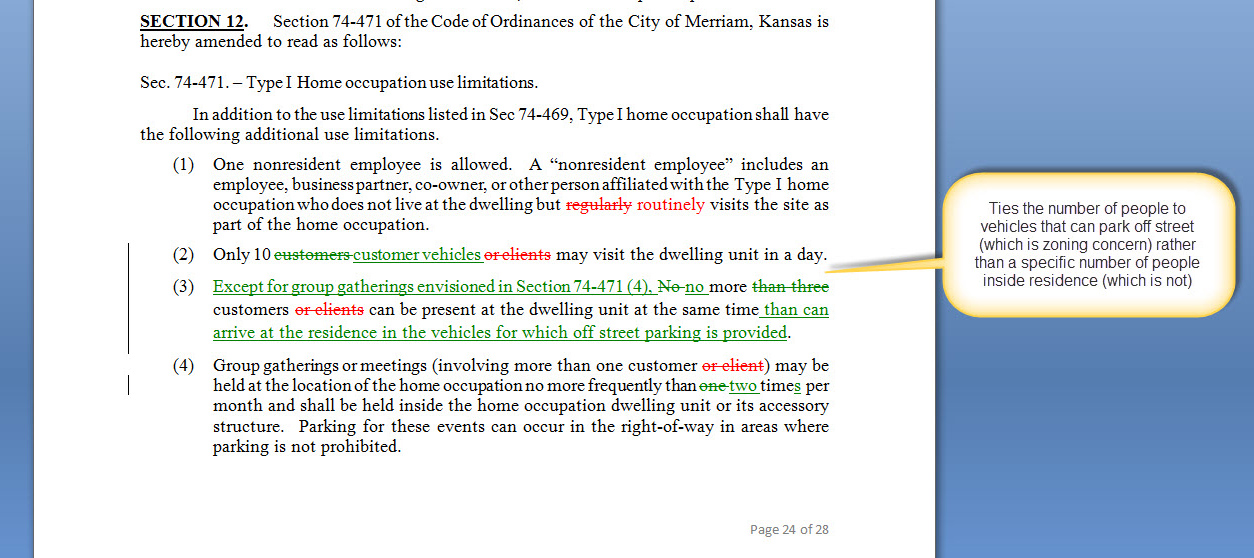
2018 Proposed Ordinance Changes
Update #2: Suggested Changes after 2nd Planning Commission review
As I did with the initial draft Home Occupation ordinance received from the Planning Commission, I have worked to draft some alternative language for the City Council to consider regarding the second draft sent back from the Planning Commission.
My proposed changes are designed to get the City Council thinking about the remaining issues as I see them. This does not have to be the final answer. Hopefully other Council members and members of the public will look at these suggestions and come to the City Council meeting Monday, April 9, 2018 to express their opinions.
Type II Home Occupations
I fully support (and advocated for) eliminating both the accessory use (zoning) permit for Type II home-based economic activities and the occupational license requirement. I believe the ordinance will now work well for those type of no-neighborhood-impact activities.
Type I Home Occupations
The document "Neal Round 2 Draft (marked up)" also addresses proposed changes to the Type I home occupations that I think are still needed. These Type I changes provide a series of modifications to the "Authorization" section, to the "Use Limitations" sections, and to the "Type I Home occupation permit" section. My proposed changes are shown in green. The final round of staff recommended changes are shown in red and the final Planning Commission changes are shown in blue.
Neal Round 2 Draft (marked up)
My proposed changes start on p. 21 with the "Authorization" section (Sec. 74-467). This section contains the purpose(s) of the ordinance and provides the philosophical reasoning behind the authority to regulate home occupations. This section is a holdover from the 60's and 70's and still includes authorization to regulate based on concepts that are outdated in the modern technological era.
The current language implicitly still makes the argument that because an activity involves income production, it is inherently a zoning matter. 40 to 50 years ago that was a reasonable linkage. It no longer is because so much economic activity (work) now occurs in the digital space rather than the physical space that zoning deals with.
We must clarify language like, "to prevent nonresidential activities typically found in commercial districts" from occurring in residential neighborhoods. There are now many activities 'typically found' in commercial districts that are just as typically found in residential districts these days.
I believe the "Authorization" section should only include concepts that tie to the regulation of activities that may reasonably impact neighbors, the neighborhood, or the city infrastructure. The section should enumerate those zoning concerns and why they are zoning concerns, rather than some sweeping language that can be misinterpreted as authorization to over-regulate non-impacting activities under the zoning ordinances.
I have discussed my proposed changes to the "Authorization" section in a short video. Again, my proposed changes are shown in green. The final round of staff recommended changes are shown in red and the final Planning Commission changes are shown in blue.
I believe the "Use Limitations" sections are targeting the wrong metrics in a couple of cases and I believe a couple of items are unnecessarily restrictive and non-equitable in another instance. There is also some clean-up/clarification language needed in the "Type I Permits" section.
I have discussed my proposed changes to the "Use Limitations" and "Type I Permits" section in a second video.
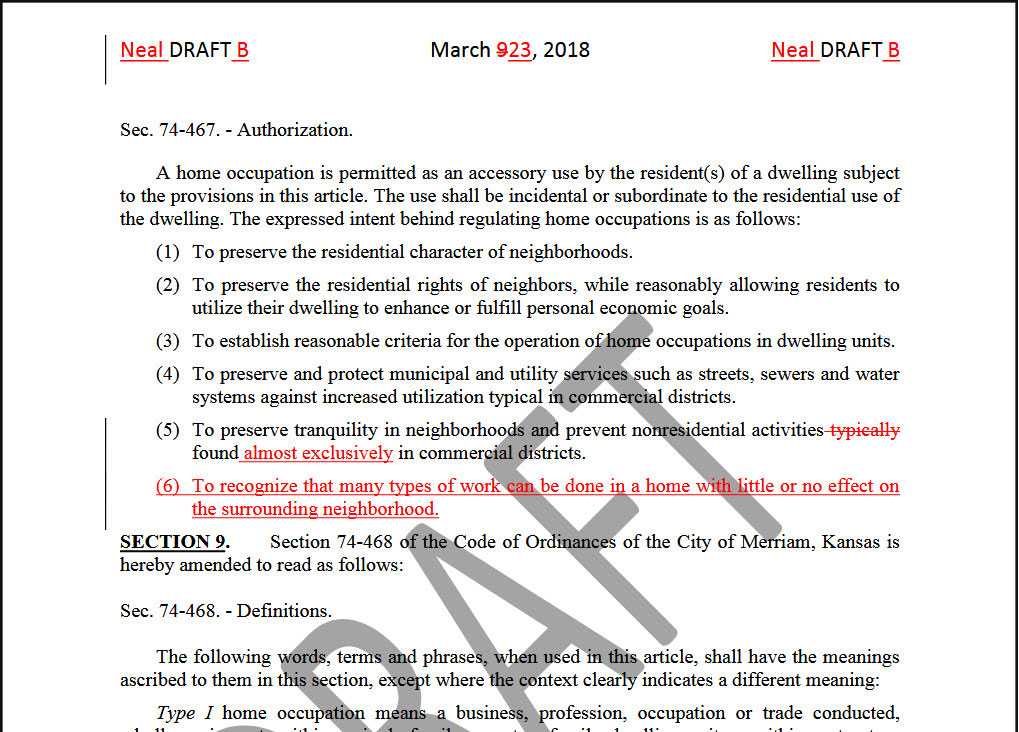
2018 Proposed Ordinance Changes
Update: My Suggested Changes
I have worked to draft some alternative language for the City Council to consider. My proposed changes are designed to get the City Council thinking about alternatives. This does not have to be the final answer. But I always believe if someone is going to complain about something, he/she should offer solutions along with the complaints.
Type II Home Occupations
The document labeled "Neal Draft" is presented in two files (one 'marked up' and one 'clean'). The document addresses the the no-impact Type II home occupation language changes that I believe are needed to remove such economic activities from preemptive regulation.
While Type II home occupations will not require an accessory use permit application under my proposal, the ordinance will still provide guidance on the use restrictions on such activities. Most Type II home occupations will comply with those rules because of the nature of the kinds of activities that are envisioned.
In cases where a resident is operating a home occupation that they believe is a Type II home occupation, but actually is not, the language I propose gives the City the authority to take corrective action upon a complaint and an investigation by staff.
Type I Home Occupations
The document "Neal Draft" also addresses proposed changes to the Type I home occupations. These Type I changes provide a series of modifications that are less subjective, clearer, and in some cases less absolute in terms of restrictiveness. Some of the language in the current draft ordinance is overly restrictive, some is too subjective and thus difficult to administer. I have attempted to propose language that is more reasonable, balanced, and understandable in the regulation of Type I home occupations.
So for clarification, the file for Neal Draft (clean) is a clean readable copy of the changes to 'staff's' proposed ordinance that I'd like to see made in order to consider it acceptable for passage. That document is available starting at the main portion of the Home Occupation changes beginning on page 21: Neal Draft (clean), p. 21
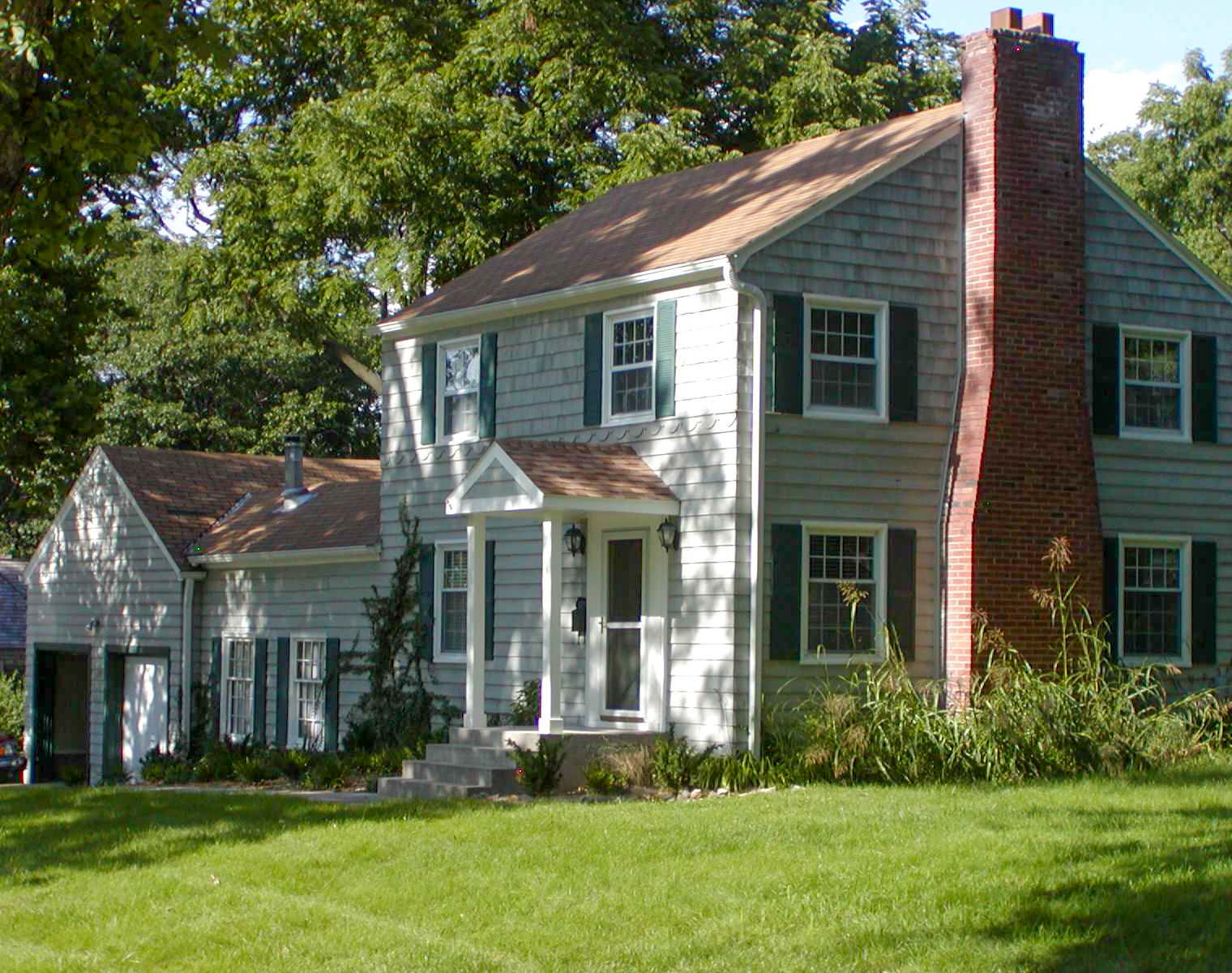
2018 Proposed Ordinance Changes
Home Occupations
Having been a resident and business owner interacting with Merriam across a variety of matters, I believe there are areas where municipal ordinances and codes should be reviewed in view of the changing needs of residents and the blurring of lines between home and work.
One such ordinance that I have encountered over the years that needs to be reviewed carefully and updated is the Home Occupations Article X of Chapter 74 (Zoning) of the Merriam City Code. This ordinance, written in the 1950's, must be substantially updated and made clearer in terms of the policy and language to better reflect modern conditions and make compliance clearer.
Since I was seated on the City Council on January 8, 2018, one of the issues that city staff has hastily undertaken is an update of the Home Occupation ordinance.
The prior, uneven, but aggressive enforcement of an outdated ordinance has been used to interfere with residents conducting economic activities from within their residences using only a computer. Such an over-regulation of 'home occupations' has been a problem in Merriam for some time.
I know firsthand about these ordinances as I have been required to obtain two such 'home office' permits and two such 'occupational licenses' during my 13 years of living in Merriam.
The issue of requiring such residents to obtain a 'home office' conditional use permit and an occupational license for a 'home occupation' from the City of Merriam was one of a number of issues that I raised in my campaign.
Objective of Home Occupation ordinances
With the rapidly changing work landscape in an increasingly digital economy, it is urgent that Merriam updates its 'Home Occupation' ordinance, particularly for work performed at home using a computer.
I believe that the purpose of a zoning ordinance should NOT BE to regulate activities conducted entirely within a resident's home that have no discernible impact on neighbors, the neighborhood, or the city infrastructure.
Doing so amounts to preemptive and unwarranted regulation by the City of Merriam that potentially could cause financial damage to some residents if the City withholds timely approval of a home occupation permit application.
By trying to regulate activities that have no zoning impact, it is my belief the city is infringing on residents' economic freedom and may be attempting an illegal restraint of trade.
An ordinance should be clear. It should be easily understandable by residents. This proposed ordinance is not clear. Its language is so subjective in critical areas that the Community Development Director will be making unilateral decisions about people' livelihoods without objective standards of administration.
An ordinance should be equitable. It should treat all residents equally. This ordinance must use indirect information for enforcement that will only detect certain categories of economic activity despite the fact that it will be impossible to detect other categories of activities.
This new ordinance does all those harmful things.
What follows is an unfortunately lengthy discussion of the variety of concerns about the proposed Home Occupation ordinance that will be before the City Council on Monday, March 26th. Since the proposed ordinance was drafted entirely by "city staff," there has not been a way for myself (or any other City Council Member) to effectively have input into crafting of the updated ordinance (which is a whole other problem which I will address on another day).
Planning Commission action
A draft new ordinance prepared by Merriam's Community Development Director, Mr. Bryan Dyer was heard before the Merriam Planning Commission on Wednesday March 7, 2018 at 7:00 PM.
The public hearing on the matter was held, but due to the interruptions and aggressively expressed counter opinions by the Chairwoman, I believe a fair public hearing was not held. Some residents were likely dissuaded from offering comments due to the aggressive tone of the Planning Commission Chair.
City Council members like myself were discouraged from providing information to the Planning Commission under the threat of being forced to recuse ourselves when the matter comes before the City Council.
The outcome of the March 7th Planning Commission vote was reported by staff to be 'unanimous' despite the absence of two members, one of whom has publicly expressed strong opposition to some aspects of Mr. Dyer's thinking in a previous Commission meeting on Feb. 7th.
City Council responsibility
What follows in this web presentation is an attempt to offer an alternative view of an important public policy matter that should be the purview of the governing body rather than formulated by a non-elected city staff member.
The City Council should not abrogate its legislative function through continuing to allow an outsized staff control of its deliberative process. Recommendations on a matter as important as this one should have been delegated to a committee of City Council members that consult with city staff when needed, but which principally craft the outlines of the public policy to be reflected in the ordinance. The City Attorney can/should assist in perfecting the language to reflect the intent of the Council.
We were elected to use our judgment and to reflect the feedback from the constituents that we represent. We must not surrender our duties by being rushed into a bad decision like I believe the proposed 'Home Occupation' ordinance is, just because we want to fit in and get along.
City staff should be administering the public policy decided upon by the elected officials. City staff should not be formulating the public policy and then manipulating the process to slip their preferred policies past a complacent Planning Commission and City Council for rubber stamp approval.
Staff does not stand for election. We do.
Proposed Ordinance Continues to Regulate Unregulatable Type II Activities
While there are some positive aspects to the proposed new ordinance, the new ordinance ignores the most important aspect of the update needed. The update fails to remove from regulation, the significant amount of home-based economic activity by Merriam residents conducted entirely within their residences that has zero impact on the residential neighborhood.
As previously stated, one obvious example of the types of activities that should be removed from city regulation are digital workers who use a computer to work remotely or to produce intellectual property on a computer device.
This type of residential use should be 'by right' and not by permission as an 'accessory use'. Mr. Dyer's new ordinance continues the regulation of such no-neighborhood-impact activities likely being conducted by 1/5th of our working residents.
The proposed ordinance continues to regulate such economic activity and requires the obtaining of a home occupation 'accessory use' permit and an occupational license from the City of Merriam. The new ordinance also adds additional regulatory control of this no-impact activity that is unnecessary, invasive, impractical, and impossible to administer equitably.
Changes to Type I Activity Regulation
There are also more stringent requirements in the new ordinance on other types of home occupations that could potentially have an impact on neighbors and thus a legitimate zoning concern.
While I believe it is reasonable to have a regulatory framework for such "Type I" home occupations, the way that these changes have been misleadingly presented to the Planning Commission and to the public 'by staff' as a loosening of the regulations where the more restrictive changes in language have been characterized benignly by the Community Development Director as simply 'clarifications.'
In fact, some of the 'clarifications' are likely just things that the Community Development Director may have wished were in the old ordinance but were not, and were instead administrative decisions that had been previously made by his department within the latitude he has to 'administer' the law as city staff. By codifying these items, the Community Development Director actually will have the authority to enforce his interpretations of the way zoning enforcement should be done.
Poorly Crafted Language Will Create Problems
A final class of problems with the new ordinance is that it includes too much subjective language that will need to be interpreted by the Community Development Director, rather than being spelled out in the ordinance so that residents can read and understand the ordinance's requirements on its face. Terms like "primary office" and "large equipment" are such subjective terms used as the operative terms of important sections of the proposed ordinance.
There are also very precise but unreasonably restrictive terms included in the ordinance. For example, the definition of a "Type II" (no-zoning-impact) home occupation includes the requirement that prohibits the "storage of tools or equipment for use off premises." Well that pretty much eliminates any resident who needs to take a laptop computer to a meeting off premises since "No customers or employees shall visit the location of a Type II home occupation." Does this mean never ever?
Another fun restriction in the ordinance is "Type II home occupation shall only be conducted by a person residing in the dwelling with no assistance from other individuals or groups." Thank God I'm grandfathered into the old ordinance, because my daughter who is also a web developer but no longer lives at my residence, occasionally collaborates on some projects with me!
This proposed ordinance is not well thought out. It should not be passed as is. As a City Council, we should take the time to craft a proper ordinance.
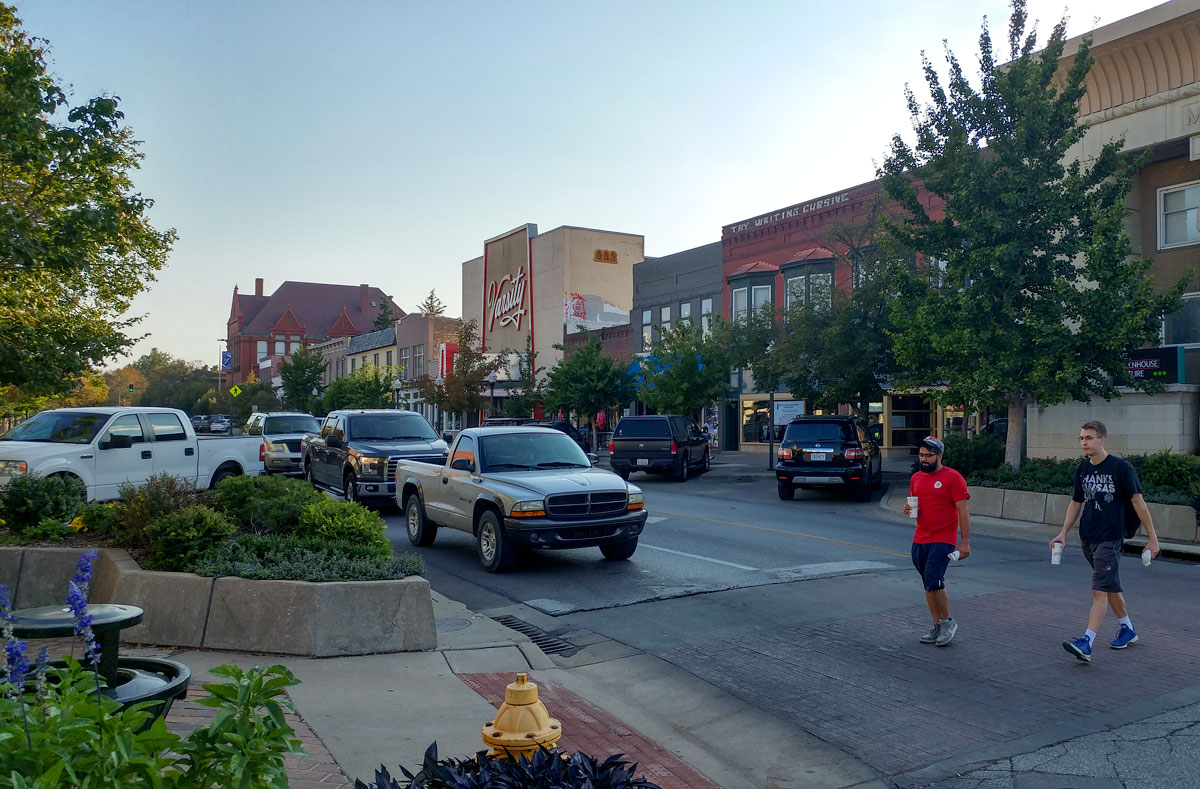
2018 Proposed Ordinance Changes
A Better Approach to Regulating Home Occupations
A more modern and appropriate ordinance regulating 'Home Occupations' is the ordinance written in 2006 and updated in 2017 currently in effect in the city where the Merriam Community Development Director and the City Attorney currently reside, Lawrence, KS.
The approach taken in Lawrence is that use of a residence to conduct economic activity that has no impact on the neighbors, the neighborhood, and the city infrastructure is a considered a normal residential use.
Rather than focus on whether a resident is conducting an economic activity within a residence, the ordinance correctly focuses on the performance effect of the resident's activity on the neighborhood. "Home Occupations that comply with the performance standards... are allowed by-right unless otherwise expressly stated."
Purpose of the Lawrence Home Occupation Ordinance
The "Purpose" section sets the philosophical reasoning behind "Home Occupation" ordinance in Lawrence.
"Home Occupations are activities accessory to uses in the Household Living category. Special regulations apply to such activities to ensure that Home Occupations will not be a detriment to the character and livability of the surrounding neighborhood. The regulations are intended to ensure that the Home Occupation remains subordinate to the residential use, and that the residential viability of the Dwelling is maintained. The regulations recognize that many types of work can be done in a home with little or no effect on the surrounding neighborhood."
Questionable Intent of the Merriam Home Occupation Ordinance
The similar purposed "Authorization" section in the Merriam ordinance also sets the philosophical reasoning behind the "Home Occupation" ordinance.
A home occupation is permitted as an accessory use by the resident(s) of a dwelling subject to the provisions in this article. The use shall be incidental or subordinate to the residential use of the dwelling. The expressed intent behind regulating home occupations is as follows:
- (1) To preserve the residential character of neighborhoods.
- (2) To preserve the residential rights of neighbors, while reasonably allowing residents to utilize their dwelling to enhance or fulfill personal economic goals.
- (3) To establish reasonable criteria for the operation of home occupations in dwelling units.
- (4) To preserve and protect municipal and utility services such as streets, sewers and water systems against increased utilization typical in commercial districts.
- (5) To preserve tranquility in neighborhoods and prevent nonresidential activities typically found in commercial districts.
I question the inclusion of (5) "To... prevent nonresidential activities typically found in commercial districts" as an objective in the Merriam ordinance. This is where we seem to be getting into trouble.
I believe with the proposed new ordinance, we are incorrectly focused on trying to prevent someone's idea of "nonresidential activities" (economic activity) from occurring in a residential neighborhood rather than a "commercial district."
The meaning of the subjective language "nonresidential activities" is in the eye of the beholder. I believe that computer work is now normally performed in residential neighborhoods, while our Community Development Director believes that such activities are better suited for "commercially zoned districts".
Base the Merriam Ordinance on Performance Standards, Not Stereotypes
Instead we should design our home occupation regulations based on the discernible impact of an activity on the neighborhood, not whether or not it is an activity "[stereo]typically found in a commercial district."
The Lawrence KS philosophical approach makes much more sense to me. The thinking carries through to the rest of the ordinance.
How Lawrence views no-impact home occupations like computer work
Essentially for the class of Home Occupation that Merriam is proposing to continue to regulate (the "Type II" home occupations with no customers and no employees), Lawrence assumes that such Home Occupations (their "Type A" Home Occupations) are a normal residential accessory use guaranteed "by right" and thus not subject to any regulation by the city.
How Lawrence views other home occupations with a possible zoning impact
For home occupations ("Type B") that may have an impact on the neighborhood, Lawrence assumes that the resident has the right to conduct the home occupation provided the performance restrictions in the ordinance are followed by the resident.
The only requirements are notification to the City of Lawrence, the neighborhood association and neighbors within 200 feet of the property plus a signed affidavit agreeing to follow the stated rules (performance standards). The permit is automatically granted. Only if the resident violates the performance agreement can the city revoke the home occupation permit for two years.
Under the proposed Merriam ordinance, the similar ("Type I") Home Occupations require an application and a specific decision by the Community Development Director. There are many more restrictions associated with the Merriam "Type I" home occupations than the Lawrence "Type B" home occupations.
Lawrence assumes residents should be allowed to reasonably work from home without hindrance unless they break the rules. Merriam wants to know what everyone is doing in advance so its staff can make a decision on what its residents are permitted to do. Merriam wants to micro-manage its residents. Lawrence examines the net discernible effect of the residents' activities only. Lawrence has it right.
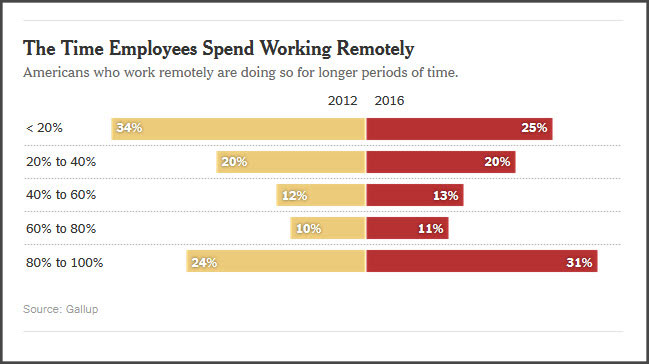
2018 Proposed Ordinance Changes
Working From Home in the Digital Labor Market
Based on recent statistics 43% of American full-time workers in 2016 worked part of their time at home. Of that group 42% worked more than 60% of the time from home (31% worked more than 80% of the time from home). Overall that means 18% of the workforce in 2016 worked at home 3 or more days per week. That's nearly 1 in 5 workers.
The data comes from an extensive report prepared annually for employers by the Gallup Organization entitled Gallup State of the American Workplace 2017, specifically from Chapter 8: "The Changing Place and Space of Work" (p. 147). Most of these home-based workers work on a computer connected to the Internet.
In Merriam with 5,224 dwellings, and multiple workers living in some of them, with a population of 11,245 residents, assuming 2/3 are working age, and accounting for the labor participation rate of 63% (Feb 2018), then we probably have at least 853 Merriam residents working more than 3 days a week from home as their primary source of income. If we add all the other secondary or part time economic activities conducted from home in Merriam that may or may not be required to have a home occupation permit, then the number of residents affected would likely be significantly larger.
Since there are no clear discernible tests in the proposed ordinance for Type II 'home occupations' that can be read from the plain language of the ordinance as written, then each of these residents engaging in no-neighborhood-impact commerce situations will have to at least discuss their economic activities with the Community Development Director in order to determine whether a 'home occupation permit' from the city will be required, despite the fact that there is no impact on the neighbors or neighborhood.
The Community Development Director apparently is the only one who can be determine these things because the ordinance language provides no explicit guidance that residents can reasonably use to determine whether they need a home occupation permit or not.
Dealing with a thousand or so such residents will be a huge waste of the Community Development Director's time and the city's money. The question becomes what is the actual benefit to Merriam residents from this regulatory activity? Is there a risk to the city if the Community Development Director unreasonably interferes with residents' rights to earn a living by denying their application?
The Planning Commission never heard this. It's a shame. The rate of work-migration to residences has increased 30% in the 4 years from 2012-2016. At the same rate of increase, two years hence in 2018, the rate of working from home more than 60% of the time (more than 3 days per week) is likely now 21% in 2018. That's more than 1 in 5.
Many types of work are frequently based from residential locations in 2018. Examples include people performing:
- professional knowledge work – legal, accounting, architects, engineers, drafters using CAD and Building Information Modeling (BIM) software, etc.;
- creative work – writers; designers; digital artists including illustrators, photographers, videographers, graphic artists; photo editors; video editors/post production;
- computer professionals/IT work – programmers, web front-end developers, web back end developers, UX professionals, security consultants, social media consultants, technical support reps, customer service for digital commerce;
- healthcare work – diagnostic radiology, medical transcription, insurance claims processing, health insurance customer service, home based care providers including nurses, physical therapists, etc.;
- sales – b2b sales reps, real estate, pharmaceutical reps, insurance agents;
- finance – financial planners; insurance agents; day traders; etc.
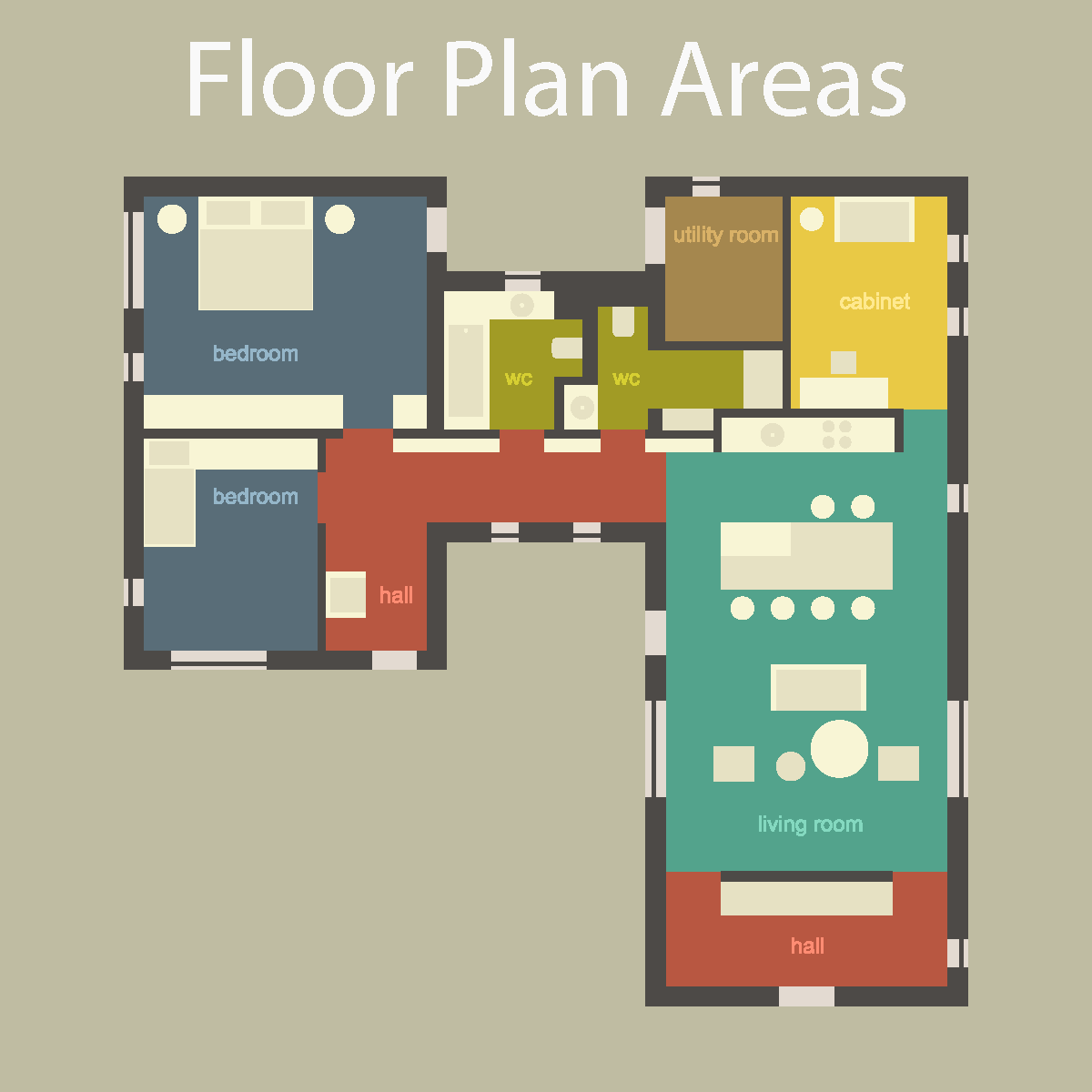
2018 Proposed Ordinance Changes
Over-regulation
For example, even with a no-impact 'Type II' Home occupation, the new ordinance as written would essentially require a city inspector to come into your house to determine compliance with some of the conditions set forth in the regulations, even if your business activity is simply conducted on a computer device like those generally found in most Merriam residents' homes. Other residents use their computers in a substantially similar manner for personal fulfillment activities like interacting with social media platforms. Such use doesn't trigger a zoning concern nor a visit from the city inspector. Why would business use of a computer make the computer use activity have a zoning concern?
In his presentation before the Planning Commission on March 7, 2018 Merriam's Community Development Director, Mr. Bryan Dyer, summarized to the Commission members the changes that he is proposing in the new ordinance using a PowerPoint presentation rather than the actual ordinance language.
In the presentation Mr. Dyer provided an over-simplified characterization of his proposed ordinance which mixed the language in the proposed ordinance with his personal ideas about how he would administer the ordinance in practice as the 'zoning administrator.' No distinction was provided in the PowerPoint presentation to the Commission between the subjective language in the ordinance and how he would administratively decide whether to approve or not approve residents' applications for a home occupation permit
One example of the discrepancy between language and Mr. Dyer's unwritten administrative policy is the claim in the PowerPoint presentation that the inspection of residences would not be required because the resident would only be required to 'self-certify' their compliance. Nowhere in the proposed ordinance does it say that an application for a home occupation permit will be automatically granted based on some 'self certification' mechanism which itself was not presented to the Commission. The words 'self certify' or 'self-certification' do not appear in the ordinance language.
This means that the self-certification envisioned in Mr. Dyer's PowerPoint presentation exists entirely in the administrative latitude provided the 'zoning administrator.' Inclusion of this 'self certification' idea in the presentation – but not the actual ordinance – is misleading and may have led the Commission to believe that the ordinance is less intrusive than it actually is. Home inspections would be permitted/required under the language of the proposed ordinance despite Mr. Dyer's stated intentions.
Based on previously reported examples under the existing home occupation ordinance, such a home occupation inspection requirement creates a pretext for city officials to enter a dwelling thus providing an opportunity for the city inspector to observe other potential code or zoning violations that the city could then demand corrective action for. Merriam recently hired additional code inspectors to make proactive codes enforcement a priority.
If the compliance rate with the new home occupation ordinance increases and Merriam includes unnecessary regulation responsibilities for no-impact work-from-home situations in the ordinance, then the codes enforcement officers will have to be diverted from other more important enforcement activities in order to perform compliance verification tasks like measuring floor areas used in the home occupation. Alternatively, the city will have to hire more codes enforcement officers.
I think that in the case of work-from-home activities that have no impact on surrounding property owners, such an inspection could be construed as a violation of residents' reasonable expectation of privacy. The requirement to file a home occupation permit application with the city that specifically enumerates the type of occupation that the resident conducts is a further potential violation of privacy since such a document becomes a public record that can be easily obtained by other members of the public.
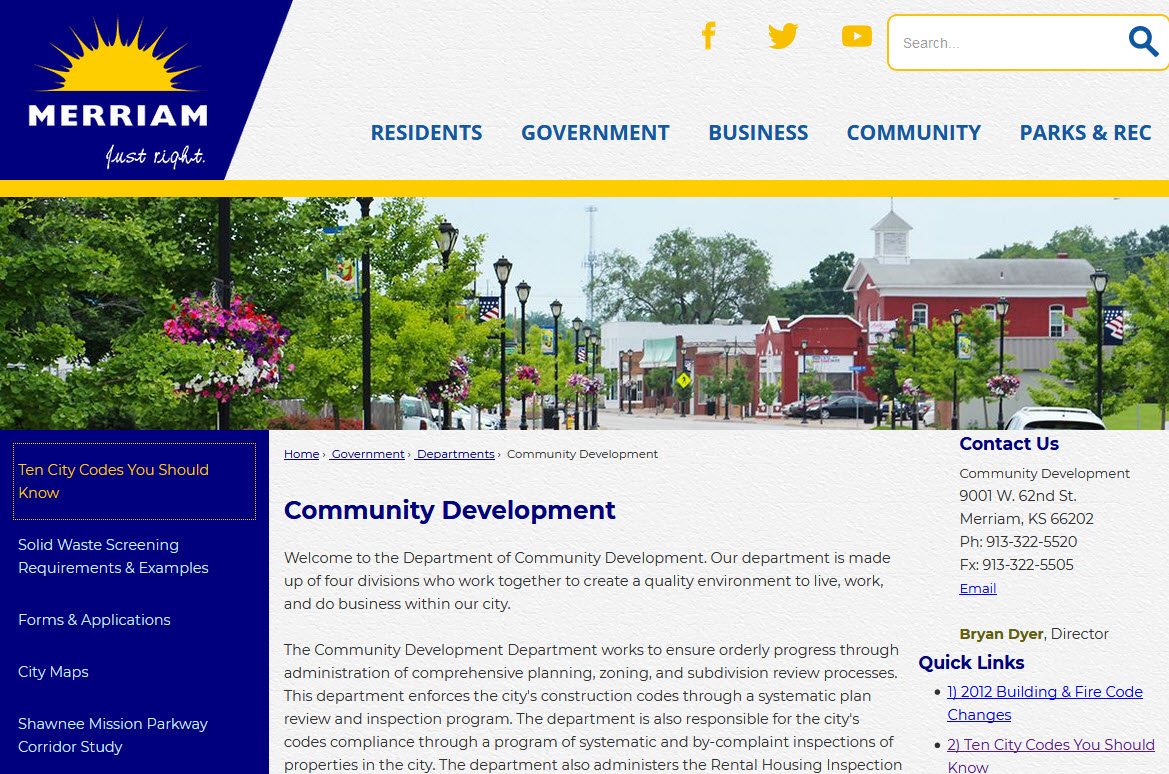
2018 Proposed Ordinance Changes
Approval Authority Concerns
An additional significant problem is that new proposed ordinance seeks to transfer the decision making authority over Merriam residents' livelihoods to a single individual, the Merriam Community Development Director. Under the existing ordinance, approval for the conditional use of a residence for a home occupation resides with the Planning Commission. At least at the Planning Commission, the decision over a resident's personal economic situation rests with a multi-person body rather than solely with a single individual.
There are other significant constraints associated with the regulation of no-impact home occupations – referred to as Type II home occupations – which essentially make such a designation unworkable for most home-based work.
For example, the new regulation prohibits the "storage of tools or equipment for use off premises." Most digital and other workers will necessarily violate this rule when they take their laptop computers to client locations or take their camera equipment to a video shoot location. Remember that the authority to revoke the home occupation license rests solely with the Community Development Director.
Another ridiculous restriction in the new ordinance is the language "Type II home occupation shall only be conducted by a person residing in the dwelling with no assistance from other individuals or groups."
Thank God I'm grandfathered into the old ordinance, because my daughter who is also a web developer but no longer lives at my residence, occasionally collaborates on some projects with me!
A further restriction, "No customers or employees shall visit the location of a Type II home occupation" seems way overdone as well. Does this mean never ever? Remember that the authority to revoke the home occupation license rests solely with the Community Development Director.
'No customers or employees shall [ever] visit the location of a Type II home occupation' and 'No assistance from other individuals or groups' make the Type II classification impractical. I can understand limiting the visits of customers or employees to a reasonably small number of instances, but absolute prohibitions are just inviting non-compliance.
Issuing regulations that are onerous and likely to be unfollowable only encourages a general pattern of disregarding Merriam ordinances. Residents' experiences with Merriam ordinances that they can't really comply with sets a bad example for the rule of law. People will ultimately to do what they need at their residence in order to earn a living. Remember that the authority to revoke the home occupation license rests solely with the Community Development Director.

2018 Proposed Ordinance Changes
Arbitrary Subjective Compliance Concerns
Currently, some Merriam ordinances like the Home Occupation ordinance have to be interpreted at the staff level for situations that the ordinances were not intended to address.
The proposed new Home Occupation ordinance does not eliminate these subjective judgments made by city staff. The City Council should be making many of those decisions about policy through properly crafted ordinances to insure consistent treatment is provided to members of the public. City staff's responsibility is to administer the laws of the city. Good clear understandable presentation of city requirements and rules is important for residents and businesses in our community.
Because no-impact economic activities conducted within residences are not discernible, detection and enforcement for zoning purposes is not feasible, resulting in non-equitable treatment of individual residents by the city and a potential illegal restraint of trade should the city deny any applications.
What does "primary office" mean?
One example of the subjective and inappropriate judgment likely to be used by city staff involves determining which residents who work from home in no-impact ("Type II") situations will be required to obtain a home occupation license and which residents will not. Subjective administration by the Community Development Director will be necessary due a clear lack of explicit language in the new ordinance that provides such guidance.
The determination is to be based on the ordinance language "where the residence serves as the resident's primary office." Such language is very subjective.
What does "primary" mean? How is this determined?
What is an "office"? What if a resident works the majority of time at remote job locations, but performs some office work at home on the computer constituting less than half of his/her work activities?
Use of this subjective term "primary office" presents problems with equitable treatment of residents.
Based on conversations and observations of the statements of the Community Development Director, the definition of "primary office" seems to have an evolving set of evaluation criteria in Mr. Dyer's mind. I have recently heard him use all of the following as potential decision criteria:
- The address the resident receives business mail.
- Even if a resident works full time from home for an employer (i.e. not self-employed) and if the employer has another legal business address, then the residence is not the employee's "primary office" and such resident does NOT have to obtain a home occupation permit.
- Later the answer changed to if a resident works full time from home for an employer (i.e. not self-employed) and if the employer has another legal business address but employee works full time from home, then the residence IS the employee's "primary office" and the resident DOES actually have to the obtain a home occupation permit.
- Determination also will be based on whether the economic activity conducted at home represents more than half of the resident's income, establishing the 'primacy' test thus making the residence the "primary office" requiring a home occupation permit.
- Using the "over half" of a resident's income test, how an evaluation of 'more than half' of the income would be determined seems problematic as well.
- In response to a question at the public hearing from a wheelchair bound resident whose only active income producing activity would be making lamps at a work table in the residence, Mr. Dyer determined that the resident would not be required to get a home occupation permit since most of the resident's 'income' comes from disability payments. Seriously – what about stock dividends? Trust fund payments?
All this arbitrary mental gymnastics is only necessary because the city is trying to make a determination about whether a resident must get permission to perform income producing activities from within their own residence.
The deciding staff member is forced to use indirect means of evaluation BECAUSE THERE IS NO DISCERNIBLE/MEASURABLE IMPACT on the neighbors that can be observed. Rather, the ordinance seems to be trying to regulate/limit "non-residential" (i.e. income producing) activities from residentially zoned areas of the city for no reasonable purpose.
In a similar vein, detection and enforcement of non-complying residents cannot be equitably done for an unobservable in-home economic activity. State registered business entities like LLCs are currently picked up by scanning Kansas Secretary of State (KSOS) business filings, despite the fact that such filings do not mean that any business is actually being conducted at a Merriam residential address.
However if the Community Developement Director again decides the "primary office" test is based on the receipt of business mail at the residence, then a non-equal treatment of residents is set up. Other types of business organization such as a Sole Proprietorship would not be detectable from KSOS records. Employees working from home cannot be detected except through voluntary admission.
As a result, there is a potential problem with unequal treatment of residents based essentially on things like the proportion of their income that they receive from their home-based economic endeavors, or the form of compensation they receive from their home-based work, or the business entity structure the resident uses to derive their income.
In my view, city staff should not be picking favored types of economic activity over others if the activity is essentially the same and creates the same level of impact on the surrounding neighborhood. If we are going to design our residential regulatory scheme based on whether an activity is commercial or not (the premise of which I disagree with in the first place), then all home-based economic activity should be regulated according to the same zoning impact standards.
The city should strive to balance the needs of the property owners against overly restrictive zoning constraints. This proposed ordinance, if significantly improved from the current proposal submitted by the Community Development Director, could be a step in the right direction.
The ordinance currently before the City Council in its current form is a bad ordinance. I will vote against it.
We do need to update the old ordinance however. We need to work together as a governing body to find a better solution. I will be proposing some options for the City Council to consider. In the mean time we must reject this proposed ordinance as written.
The following sections will explain my reasons in more detail.
Detailed Discussion
--Going into the weeds here--
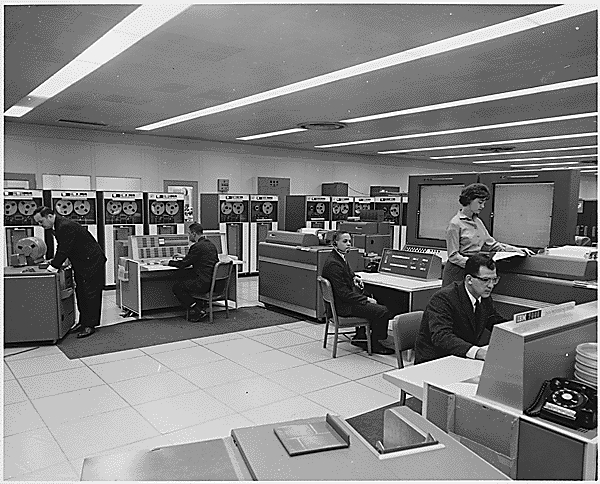
2018 Proposed Ordinance Changes
Historical Context
The City of Merriam is in the process of revising its ordinances regarding home occupations. This process is important because the home occupation ordnances and licensing requirements were written 50 yrs ago or more and a few things have changed in the intervening years. Back in the day when these ordnances were written a home occupation necessarily involved some sort of impact on the neighborhood or surrounding infrastructure. That time period also featured computers that required a floor of an office building in order to operate.
Over the last 3-1/2 decades a number of things happened, the most important of which is that micro computers were invented and became easy to use with the advent of the Apple Macintosh computer in 1984, with a graphical user interface.
Since that time, the kinds of things done with a computer for work increased by orders of magnitude because the computing power of these personal computers and related (more recent) derivative small computer devices, became significantly more powerful. Increasingly workers with small computers can handle a number of complex work tasks that had traditionally been performed within an office building but are now often performed from remote locations including workers' residences.
Moore's Law observed that the power of these devices has doubled every 18 months, even as the size of these computer devices continued to become smaller and smaller and more portable. So it was inevitable that work activities related to earning a living began to be performed in home locations rather than exclusively at a commercial office location within a commercially zoned district. This trend will definitely continue as work and residential activity locations increasingly become the just different locations within the same dwelling.
Forty years after the advent of personal computing, we are still using ordinances that govern 'home occupations' – whatever that means – under conditions of technology that could not possibly have been envisioned at the time our ordinances had been written. So we have an opportunity to rewrite the ordnances so they fit the current economic and cultural landscape as well as address the likely direction in the not too distant future of work as the distinctions between work and home continue to blur.
According to a recent 2016 survey, 43% of American workers work from home some of the time. Of that 43%, 31% spend more than 80% of their working time at home. The number rises to 42% for those who work from home 3 days or more per week. This means that nearly one in five American workers spends the majority of their work time performing their duties from home. The number of Americans who work from home more than 80% of the time has increased by almost 30% over the past 4 years! We are in a rapidly changing world where the neat boundaries between home and work are being completely redrawn.
As I said earlier, the current ordnances make no distinction between home occupations which impact the surrounding neighborhood in some manner (even if minor), and those economic activities that can be conducted from home and have zero impact on the neighbors or infrastructure that the city is concerned with.
I apologize in advance for the length of this discussion. I believe it is necessary because there are so many problems with the proposed new ordinance that it will take an effort to cover them all.
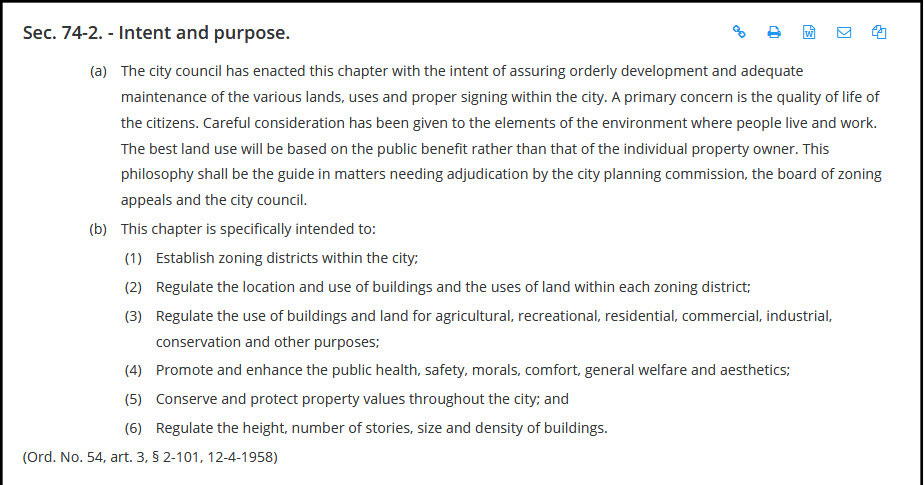
2018 Proposed Ordinance Changes
Zoning Regulation Authority
Residents purchase property at substantial cost, often paying substantial interest every month and significant property tax each year for the privilege of 'owning' an asset that they can do with what they want or need to do. These are property rights.
The intention of zoning regulations is described in the Merriam City Code:
Sec. 74-2. - Intent and purpose.
(a) The city council has enacted this chapter with the intent of assuring orderly development and adequate maintenance of the various lands, uses and proper signing within the city. A primary concern is the quality of life of the citizens. Careful consideration has been given to the elements of the environment where people live and work. The best land use will be based on the public benefit rather than that of the individual property owner. This philosophy shall be the guide in matters needing adjudication by the city planning commission, the board of zoning appeals and the city council. {emphasis added}
Although the 'Intent and purpose' section of the Zoning chapter emphasizes that the public good has precedence over the property rights of individual owners, regulation of matters with no public benefit that cause harm to individual property owners fall outside of the scope of the zoning intent.
Zoning laws are designed to be used to protect property owners from conditions caused by other near-proximity property owners that negatively impact their property rights. If a resident is using their property in a way that has no impact on the property rights of the other property owner, then such activity should logically fall outside the scope of zoning regulations. Furthermore, since there are no zoning issues, there is no reason for the city to require notification of any such activity that is otherwise legal in terms of criminal law. Such an unreasonable requirement would likely violate a resident's right of privacy.
Performing work from home that has no external impact outside the dwelling is just such an activity that should be excluded from city regulation. Individuals who own property should not be unreasonably restricted from using their property as they alone see fit. The current Merriam 'home occupation' ordinances and the proposed new 'home occupation' ordinances do just that. Residents are unreasonably restricted from using their home as the owners see fit.
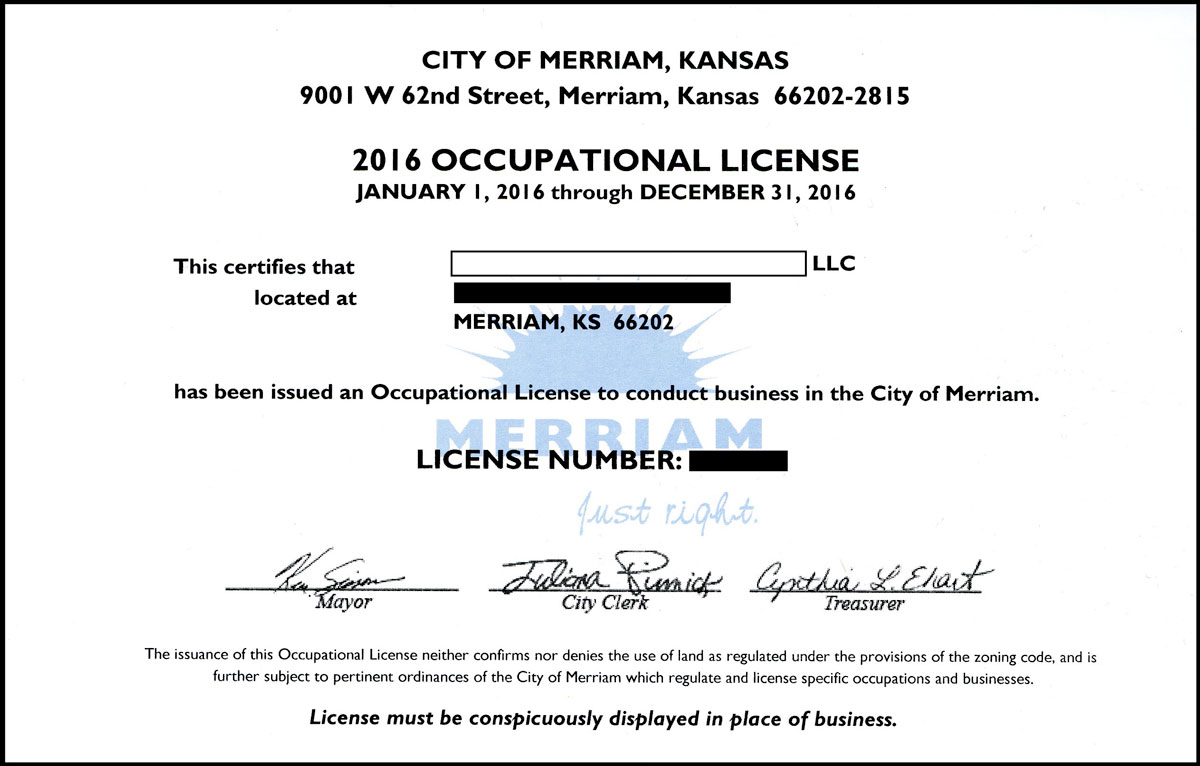
2018 Proposed Ordinance Changes
Current Home Occupation Regulations
First, it is important to understand that the current regulations in the Merriam City Code are also problematic.
The current regulatory process in Merriam actually requires that any person who is conducting any "business, profession, occupation or trade conducted, wholly or in part, within a residential building or within a structure accessory to a residential building."
This long list of general terms for personal economic activity of Merriam residents serves as a catchall for the types of "non-residential" activity for which residents are/should be required to obtain a series of permits and licenses that allow Merriam residents to work from their homes "in whole or in part." Specifically a conditional use permit is required along with an occupational license. A specific type of conditional use for no-impact home occupations is currently called a 'home office' permit.
The home office occupational license currently involves the granting of a conditional use permit by the Planning Commission and involves paying an 'occupational license' fee to the city just as any commercial business located in the city's commercially zoned districts would be required to pay. Sec. 14-27 of the Merriam City Code enumerates the conditions that require an 'occupational license,' "Every person engaged in any business, occupation, pursuit, profession, institution, establishment, utility or commodity specified in this article shall pay for a license from the city..."
The current process for obtaining a set of permits and licenses is extremely cumbersome and is essentially un-workable. The process -- whether or not you have a zero neighborhood-impact business or whether or not you work from home in some capacity that does potentially impact the neighborhood -- you go through the same process. That process involves obtaining a conditional use permit by going before the Planning Commission with your application for conditional use of your residence. And that process involves notifying your neighbors -- anyone whose properties within 200 ft. of your property line -- must be notified using registered letters of your pending application and of the Planning Commission hearing during which the home occupation conditional use application will be discussed and decided upon.
The process of just complying with the noticing requirement is obviously cumbersome. It involves going to the Johnson County Court House and obtaining a plat in order to figure out which land parcels are within 200 ft of your property line and then obtaining the names of the property owners for those pieces of property. Next you must generate notification letters to each property owner stating the nature of the work that you intend to perform within your residence. After preparation of these letters, you must take them down to the US Postal Service office and mail out the registered letters to everyone who might be affected. In the case of many digital occupations residents must do this simply because these days you just want to work on your computer inside your own house.
So clearly the existing Merriam ordinances governing the process for obtaining permission from the city to work from home is cumbersome. This new proposed ordinance in some ways attempts to simplify that part of the problem. But there are offsetting problems that this ordnance introduces which I will discuss in more detail later.
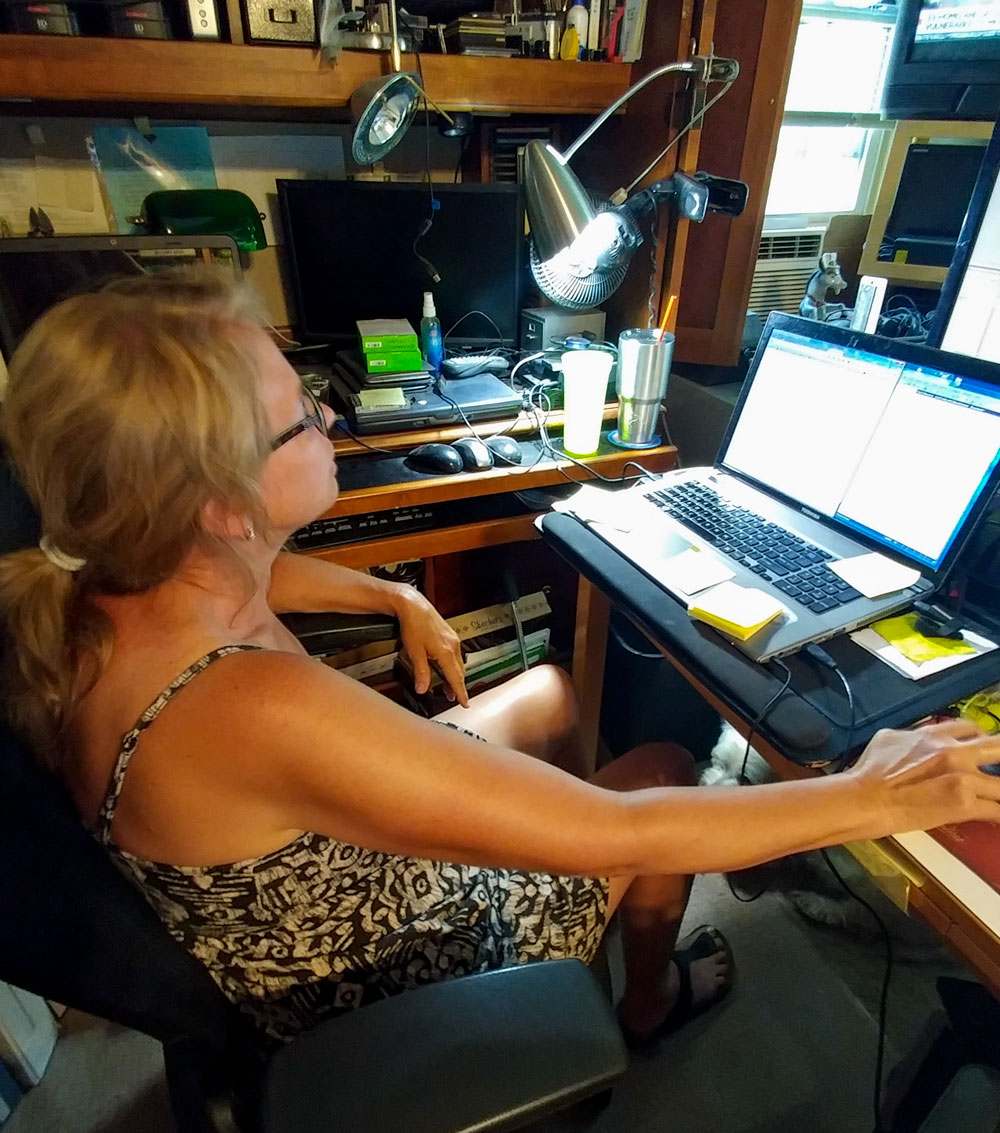
2018 Proposed Ordinance Changes
Type I & Type II Home Occupations
The new ordnance does attempt to make an appropriate distinction between home occupational activities that could have some sort of foot print from a zoning perspective compared to home business activities or occupation activities that do not have any impact on the surrounding neighborhood or the city's infrastructure. The discernible home occupations with potential impact are referred to as "Type I Home Occupations" while the non-impacting ones are called "Type II Home Occupations."
Having made that distinction however, the new ordinance still seeks to regulate the no-impact activities conducted by residents within the privacy of their homes simply because the activities are economic activities in some manner.
I believe that the so-called Type II home occupations which have no-impact on neighbors or the broader community should not require city permission nor regulation. I have made these arguments to the Community Development Director on January 17th before he made the recommendations in the proposed ordinance that is now before the Planning Commission. The detailed write up that I left with him included what I see as are the problems in the current ordinances together with my recommended solutions.
I specifically recommended exempting from regulation by the city, any home-based work performed by residents on a computer device. Such activity is very common and is rapidly increasing. It now likely represents 1 in 5 of Merriam's actively working residents. Computer work has no impact on the surrounding neighbors or neighborhood.
Despite my reasoned arguments, Mr. Dyer still feels the need for the City of Merriam to regulate these folks. They are doing activities materially identical to personal entertainment activities like Facebook that residents do on their computers at home all the time. The only distinction Mr. Dyer makes is that because one residential use includes some form of economic activity, it must be regulated, while non-economic activities need not be.
The small positive piece of the new ordinance is that the application process would be less cumbersome with a reduced level of notification required to submit an application for a home occupation permit.
The application would not go before the Planning Commission for approval but would be administratively decided by the Community Development Director, currently Mr. Bryan Dyer. I believe that this is a negative feature of the new ordinance, particularly if the Type II home occupations are to be regulated. There are many general, subjective terms included in the proposed ordinance that would be up to the sole discretion of Mr. Dyer or any future Community Development Director to interpret.
I believe the residents would be better served if the decision rested in the hands of a larger body, ideally one that is more answerable to the voters. After all, the decision made by the Community Development Director may directly impact a resident's ability to earn a living. That is a serious matter.
A better approach would be to recognize that a resident working from home in non-impacting Type II occupation is an accessory use of the dwelling granted "by right" with no permit required. Lawrence, Kansas uses just such an approach.
Even more threatening to residents if the individual official making the sole decision about a home occupation under the proposed ordinance holds some unusual views about the strong need for 'commercial activities' to be conducted within 'commercially zoned' districts of the city as I believe may be the sentiment of the proposed 'zoning administrator' who is defined as "the Community Development Director" under this proposed ordinance.
This sense of negative bias against home occupations by the Community Development Director was gathered during my communications with the him in January. I specifically made a number of arguments and recommendations to the Community Development Director on January 17th about the impracticality of regulating no-impact home occupations common in the modern digital economy.
Despite my best attempt to convince him to not include the no-impact computer-based commercial activities under the requirements for obtaining a home occupational permit/license, that class of activity will still be regulated under the proposed ordinance that he has presented to the Planning Commission and is now before the City Council.
To me, this calls into serious question the judgment of the official who will be making the decision on one fifth of our residents' livelihoods.
I have not received what I consider to be an acceptable reason for continuing such regulation of no-impact home occupations. The unknown benefits of such regulations must be balanced against the cost to both the city and to the residents who should have the freedom to earn a living without having to get permission from a city official. The city has no legitimate need to limit residents use of their homes in such a manner. This is a regulatory overreach that infringes on residents' property rights, economic freedom, as well as their privacy rights with no enumerable benefit to the broader community.
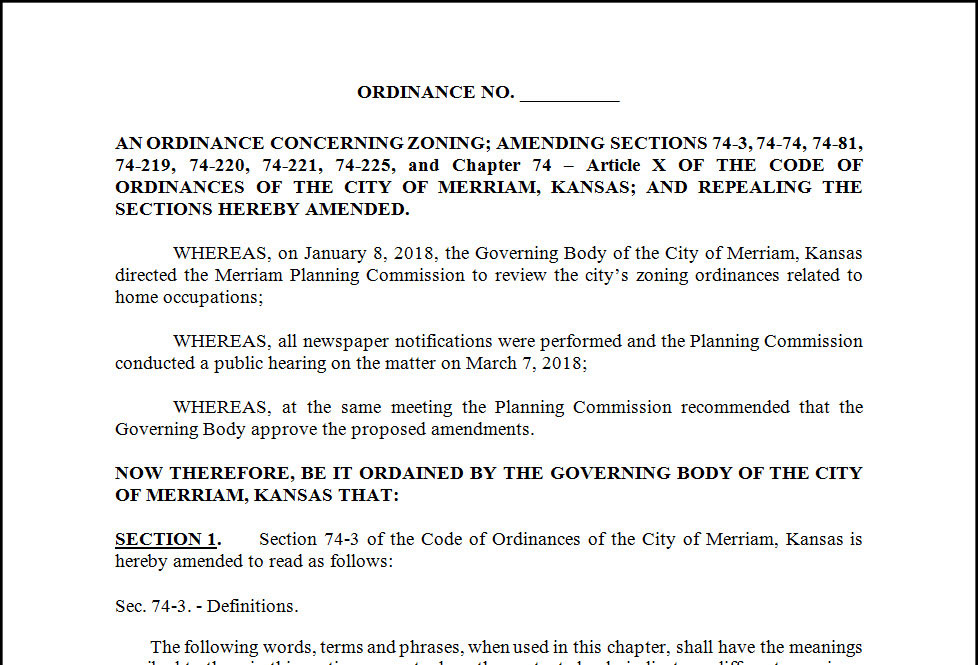
2018 Proposed Ordinance Changes
Type II Concerns
Attempting to regulate Type II no-impact home occupations brings up a whole host of questions/problems which I will now go into in more detail.
The first question I have already alluded to what is the point of regulating no-impact activities? If activities conducted completely inside a resident's own home and do not impact neighbors any way, and do not impact the community's infrastructure in any way, what is the rationalization and justification for the city to regulate those legal activities?
Sec. 74-467. - Authorization.
A home occupation that is customarily incidental to the principal use of a dwelling and may be permitted as a conditional use when approved by the planning commission. The expressed intent behind regulating home occupations is as follows:
- To preserve the residential character of neighborhoods.
- To preserve the residential rights of neighbors, while reasonably allowing residents to utilize their dwelling to enhance or fulfill personal economic goals.
- To establish reasonable criteria for the operation of home occupations in dwelling units.
- To preserve and protect municipal and utility services such as streets, sewers and water systems against increased utilization typical in commercial districts.
- To preserve tranquility in neighborhoods and prevent non-residential activities typically found in commercial districts.
The Authorization section is required to state the objective of the sections of subsequent municipal code and also serves as the guiding concept that the specific provisions can be compared to in order to see if they conform to the rationale for the ordinance. The Authorization section provides the basis of authority for the ordinances.
Items 1-4 make general sense to me as legitimate objectives of regulation for home occupations. I point out that the word "reasonable" in item 3 is subjective however.
Item 5 contains two catch-all elements that are extremely subjective and are dubious in terms of their relevance to the need for regulation of work performed by residents from home. While the first clause is a nice general objective, "To preserve tranquility in neighborhoods," this objective could only realistically apply at all in the case of home occupations which actually have an impact on the neighbors.
The next clause, "To... prevent non-residential activities typically found in commercial districts." What are "non-residential activities typically found in commercial districts" anyway in 2018?
Are we really talking about activities which are typically found in commercial districts, but nowhere else? Many home occupations performed using a computer are generally at least as likely to be found in residential neighborhoods as in commercially zoned districts these days.
Why 'prevent' economic activities by residents in their homes that have no impact on the rights of other property owners or the city's infrastructure simply because they are somebody's idea of non-residential activities?
Furthermore the ordinance seeks to regulate these no impact businesses in such a manner that have no appreciable or measurable benefit to other residents and would require a wasteful use of city human resources to administer the detailed restrictions contained in the new ordinance. The level of intrusiveness required to regulate as envisioned potentially raises privacy concerns as well.
The 20% area regulation
One of these problem regulatory concerns is that the home occupation for a no-impact business must not utilize more that 20% of the dwelling floor plan area.
(3) No more than 20 percent of the floor area of a dwelling unit shall be devoted to a home occupation.
Now if one thinks about that requirement it's easy to see some problems with administering it.
Administration of this regulation would require a city official to come and inspect the interior of the resident's home and measure and calculate areas somehow involved in the 'home occupation.'
Let's say you are a home-based worker that uses a computer, but you also have multiple computers in your home. Furthermore some of the computers may be used always to perform work-related tasks, others used on occasion for work, and others which may be used primarily for entertainment and personal matters.
How does the city inspector calculate which portion of the floor space is dedicated to the home occupation?
- Is it each room that has a computer?
- Is it the area of the desk and chair or desk and chair and any kind of rolling floor pad that is used?
- Is it just up to the discretion of the city staff person who comes out to inspect?
- How does the inspector determine which computers are work related and which are not?
- Does he/she need to determine the percentage of usage of each computer for work versus personal matters or entertainment?
- Does that mean the inspector needs to get on each computer and see what kind of software is installed there and determine if its work related or not?
I know this is a silly example, but this is a silly regulation for a common type of Type II (no-impact) businesses.
The tool/equipment prohibition regulation
The ordinance also prohibits the no-impact home business resident from storing tools and equipment at the residence which may be used off premise in the conduct of the business. The definition of a Type II home occupation includes the restriction concerning the storage of tools and equipment.
Type II home occupation means a home occupation involving no ... storage of tools or equipment for use off premises.
Again the impracticality of this restriction should be obvious. Again draw your attention to people doing digital work or knowledge-based work from home. Equipment included in this prohibition would include the laptop computer that the resident might take to visit a client off premises under a strict interpretation of this provision.
Is it reasonable to require that a resident operating a Type II home occupation would need to rent a space somewhere in a commercial district to store a laptop for use off premises and not store it in their house?
It appears that there is some false distinction that the regulation is trying to make that is just impractical. Again, I understand this example is silly, but so is the ordinance requirement to not store any tools and equipment "for use off premises" inside your residence. So is the desire to regulate no-impact home-based economic activity so tightly.
There are a number of reasons a homeowner will likely be in violation of that part of the new ordinance should it survive intact. I will tell you for sure that I will likely be in violation of that ordinance because it is completely impractical and unworkable.
For example, I use professional video equipment – camera, sound (microphones and wireless transmitters), tripod, etc. – that fit in two carrying bags for some of our digital media production work. For a variety of important reasons, I keep this non-residential 'equipment' at my house and take them to off premises to use.
I will continue to keep them at my house because it is not cost effective or convenient to rent space and store them somewhere else. They require heated secure storage. So to expect me not to utilize the heat and security at my residence is ridiculous. Yet the ordinance as written would require me to store off site if you follow the new ordinance to the letter.
Again, what is the point of such a regulation for a Type II home occupation?
Now I recognize again that common sense and judgment on part of city staff would likely mean that Merriam would not enforce that particular section fully, but how can a resident be sure of what staff actually will try to enforce if the ordinance permits them such wide latitude?
Concerns of residents have been raised to me about the objectivity and reasonableness of current members of the City's staff, particularly if a degree of animosity develops between the city staff member and the resident over a differing view of what is 'reasonable' regulation of their home occupation.
Such conflicts would be avoided if we write a well crafted new ordinance that has a balanced regulatory touch. Bad regulations will harm neighborhood tranquility. The city needs to come out of this process with an ordinance that is relatively clear-cut to administer and does not rely solely on the judgment of an individual zoning official.
Property rights
Again, Type II home occupations should not be regulated because we are talking about activities inside a resident's home that impact nobody else.
It should be the right of people who invest the biggest part of their life savings in an residential asset to use that property as they see fit as long as it doesn't harm anybody else and provided it is not illegal in a criminal sense. So we have zoning ordinances and public offense ordinances. If the city needs to know what a person is doing inside their house regarding commercial activities that have no impact on anybody else, I would like to understand the justification is for that. It had better be pretty good.
So I've talked about the fact that we have these tool and equipment restrictions and which again I think are impossible to enforce. We also talked about the 20% floor space limitations. There are some other problems but I'm going to go to the bigger problem immediately.
Staff adjudication
The process for obtaining a home occupation license under this new ordinance would be administratively adjudicated by the "zoning administrator" defined to be the Community Development Director. If the zoning administrator decides negatively on an application, then the recourse for the applicant is to appeal to the Planning Commission which is not required to meet for 60 days. That gives that Community Development Director a whole lot of power over an individual's ability to earn a living.
If someone has an opportunity, let's say they are a programmer, to take on a contract as an independent contractor and they have to wait for more than 60 days before they can start working on that contract, they are probably not going to get that work.
On whole this regulatory regime is ridiculous, so I ask again for what purpose are we regulating these activities?
Non-resident access prohibition
Another area where the city's attempt to define what a no-impact Type II business can and can't do that seems way off base is the non-resident access restrictions.
- Type II home occupation shall only be conducted by a person residing in the dwelling with no assistance from other individuals or groups. There shall be no nonresident employees. {emphasis added}
- No customers or employees shall visit the location of a Type II home occupation. {emphasis added}
Only persons residing at the residence are permitted to work at the residence in the home occupation "with no assistance from other individuals or groups." Also "No customers or employees shall visit the location of a Type II home occupation."
Again I don't have to think too long about the flaws in this language, because my own situation is good guidance.
My daughter – who has her own apartment – is a web developer, who has partnered with me on some project work that required a small team to complete. Under this regulation, my daughter would not be able to provide "assistance" to me.
"No customers or employees shall visit the location of a Type II home occupation." Ever?
These access restrictions are effectively limiting a resident's use of their home to the point that the Type II home occupation is useless. So we are back to full Type I application with it's neighbor notification requirements except that the Community Development Director now gets to make all the decisions.
Again I ask why are we regulating no-zoning-impact home economic activity in this manner? What's the point? How does it improve the lives of the neighbors and the overall community?
Or is it just some sort of unfocused need to know what's going on in town on the part of city officials?
There are other details in the 'Use limitations' regulations for Type I home occupations which are problematic as well but I will leave them for another day.
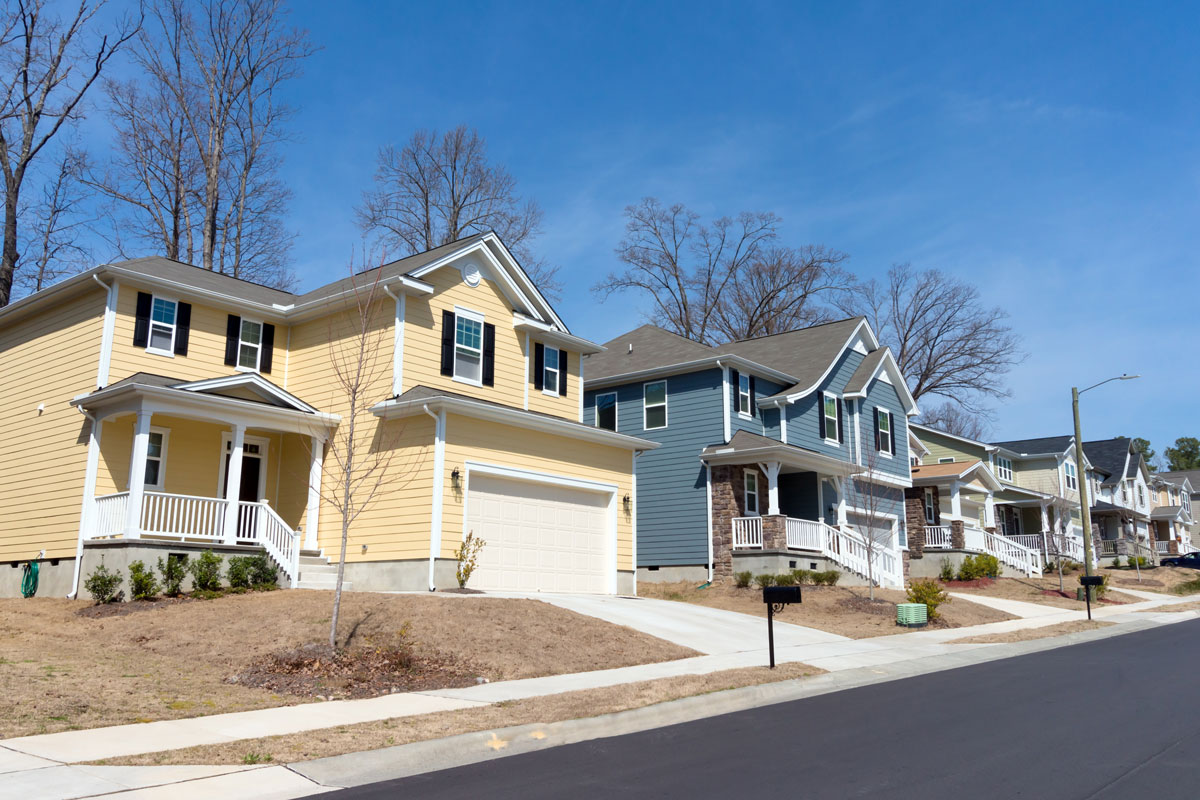
2018 Proposed Ordinance Changes
Legal entity type inequity
By far the biggest problem with attempting to regulate no-impact business – many of which are computer based or knowledge-based digital activities – concerns deciding who has to obtain these home occupational licenses. The ordinance essentially defines a home occupation in very general terms which are open to very subjective interpretation by the Community Development Director.
There are many individuals who work from home, even full time, who do not technically have their own businesses. These are individuals who work full time from home but are employees of another company.
For example my son-in-law worked for United Healthcare in Springfield MO. at a facility that was a call center for policy holders to call in with questions about health insurance claims. About 3 years ago United Healthcare decided that they were going to change the way the company provides its claims processing process and closed the call center facility. Instead United Healthcare required its employees to work full time from home in order to continue their employment. The company provided the computers and desks but the employee had to provide the space and some other home configuration requirements in order to keep their jobs.
While I disagreed with many aspects of what United Health care did to their employees, this mandatory telecommuting is a fact of life for many workers now. Their employers require at least some work be performed from the employee's residence in many cases if not their entire work product.
Based on discussions I had with the Community Development Director about current administration of the home occupation regulations and his answers to questions posed by Planning Commission members in the preliminary discussion that they had with Mr. Dyer, I believe it is his intention not to require a home occupation license for the exact same activities conducted by the resident if the resident is an 'employee' of a company that maintains a business address elsewhere, whether or not the employee ever works at that location.
So from on my understanding of how the Community Development Director personally views these matters, home-based work activities that some individuals are engaging in as employees of another company will be deemed to be normal 'residential activities' but the same activities performed by the resident for the same company as an independent contractor or through a small business entity organized as a LLC are to be treated differently as 'accessory uses' of the residence.
I believe this interpretation invites non-equitable treatment of some residents as compared to others which will be based on the subjective determination of the Community Development Director. The new ordinance should make it clear what the policy actually is. If not, the City may be subject to claims of economic harm by residents who are not treated equitably.
A relevant policy question that should lie with the governing body is whether the city is going to require a home occupational license for all workers who perform work at home, assuming the no-impact home occupations will continue to require a home occupation license as proposed by the new ordinance.
'Resident's primary office' confusion
The ordinance attempts to address this question using language that is very open to interpretation. The new ordinance only makes a distinction that the home occupation is subject to regulation "where the residence serves as the resident's primary office..." This language is apparently where the Community Development Director derives his interpretation that if the resident is not an employee of another company, the home occupation ordinance does not apply.
What does "where the residence serves as the resident's primary office..." actually mean? What does "primary office" signify?
Apparently in the Community Development Director's opinion (and that is all that matters), "primary office" means the primary office location for the business legal entity rather than the primary location that the resident performs the work activities at.
The test for administrative purpose, although never spelled out, seems to be that the entity for which the individual is performing the work maintains some business address other than the residence and pays the resident with a payroll check.
Based on my communications I believe that the term "primary office" is ambiguous and is subject to interpretation. It seems that the current city official who will be responsible for responsible for making determinations about who does and does not need to obtain a home occupation license believes that there is some sort of material distinction between employees who work at home and individuals who in some way own a business entity that uses the residence address.
I do not believe such ambiguous language and such an interpretation is reasonable on a number of grounds.
Saying that the way the resident receives their compensation for doing the same thing is germane to this determination of whether a license is required by the city is ridiculous and does not treat all residents equitably.
If an individual receives their compensation in the form of a payroll check its normal residential use with no regulation needed? Whereas if the person receives his or her compensation by check in response to an invoice, that requires approval from the city and payment of an occupational license fee? How are these two situations materially different from a zoning perspective?
In fact, such a distinction creates an extra competitive disadvantage to the individual that is performing the work in a non-employment condition. The employee often receive benefits that an independent contractor does not have. To add to the administrative time cost and financial cost of such an independent contractor only further diminishes their economic viability and opportunity. As said previously, I believe this introduces a significant equitability problem in the administration of these home occupational ordinances.
Beyond that dubious distinction between how a resident working from home receives compensation through an invoice vs. a paycheck, other problems with the definition of 'primary office' involves things like if a resident has more than one source of income and the 'home occupation' that you perform from your residence is secondary to your primary source of income. Do you need a home occupancy license? Maybe employment at some other location is the primary activity of that resident.
Because the primary source of income is derived from another economic activity somewhere else, does that relieve a resident of the obligation to obtain a city home occupation license for the different business activity conducted at home?
Even if the individual is working and earning their primary income from an occupation that is addressed from the residential location, what if that employee spends less than 50% of their time at the residence working and spends more of their time say out on the job location performing work off site?
If the residence is used only for accounting or computer work but that does not occupy more than 50% of that person's time, does that fall under this determination of primary?
None of these questions are germane for home economic activities that actually have a real potential impact on their neighbors. These would be Type I Home occupations. This question of who is required to obtain a home occupation license is much more clear-cut if the standard is some potential observable impact on the broader neighborhood.

2018 Proposed Ordinance Changes
Enforcement equitability
Another angle to this discussion on the feasibility and wisdom of regulating no-impact business activity has to do with the practicality of obtaining enforcement data. Currently we have the same problem in our existing ordnance which means only certain individuals are swept up by the city's efforts to find and enforce the home occupation license requirement.
Based on my inquiries, the City of Merriam currently checks a couple of state-level data sources in order to identify potential home occupations operating unlicensed (illegally) within the City of Merriam. These are sales tax collection location addresses and business entity formation documents filed with the Kansas Secretary of State.
Using the sales tax collection location data may make some sense in that it has a likelihood of potentially identifying the Type I retail home businesses that would have a zoning-relevant foot print, so I'm not objecting to that approach. The sales tax data will not help identify Type II economic activities however. Use of the Kansas Secretary of State data from business entity filings to determine whether a resident is operating a home occupation is dubious at best on the other hand.
If a Merriam resident is considering conducting business and they want to have the legal protection of a limited liability company, a partnership, a limited liability partnership or even an S-corporation, they must file business formation documents with the Secretary of State.
That filing is the first step in establishing a legal entity that is authorized to do business in Kansas. In order to obtain or sign a lease on business location the legal entity must be established already. So the new business formation documents will contain almost always the home address of the owner or a principal in the business, keeping in mind the proposed business location may not actually exist at the time the documents are filed.
Furthermore, this method for detecting business activity will only catch those individuals who live in Merriam who are establishing formal state-level legal entities to conduct business. The process will not catch the larger pool of individuals operating a business as a 'sole proprietor' under the IRS tax code.
So the information process mechanism to detect no-impact businesses necessary relies on non-equitable means that will discriminate against some types of economic activities or business structure configurations vs. others. There is no data on informal economic activity that the city can easily obtain.
Most home businesses that are sole proprietorships will not have an electronic footprint that ties to a Merriam address, so they are difficult to detect with an electronic records search. If there is no visible manifestation of the business activity from the outside of the residence, then most Type II home occupations will be as undetectable as telecommuting employees are.

2018 Proposed Ordinance Changes
Type II Conclusions
There's no practical way to administer this new ordinance (or the old ordinance) with regard to no-impact Type II home occupation activities.
The problems with this proposed ordinance in regards to no-impact, largely computer-based economic activity is that we're focused on the wrong thing from a zoning perspective. We're focused on this phony distinction regarding activities conducted in a residence that somehow supposes that some level of business activity conducted from within a Merriam dwelling warrants regulating.
We should instead be focusing our attention on whether an activity could adversely impact neighbors and the local infrastructure. If we can get away from that false supposition about home-based economic activity necessarily having an impact on the neighborhood that made sense 50 years ago, and instead come to realize we should be regulating only matters with a true zoning impact, then we can construct a modern workable ordinance for the next decade.
So until the City Council is presented with an ordinance to approve which does not regulate no-impact 'home occupations,' realizing the impracticality of regulating such activities, I will oppose the new ordinance and strongly recommend everyone else to do the same.
If that effort to exclude Type II home occupations from regulation fails and the City Council believes that the new ordinance should still require regulation of non-impact home occupations, then I believe there should be significant changes to the ordinance that clean up the over-regulation, eliminate the overly subjective language in the ordinance, and provide a fair process for granting such licenses with access to a multi-person judicial board.
If we can't do that, we should just keep the current ordinance on the books until we can come up with a better ordinance.
The current ordinance at least provides a multi-person decision making body so that there is a better chance of reasonableness in that determination than simply allowing a single individual to be making the determinations affecting our residents' ability to earn a living.
